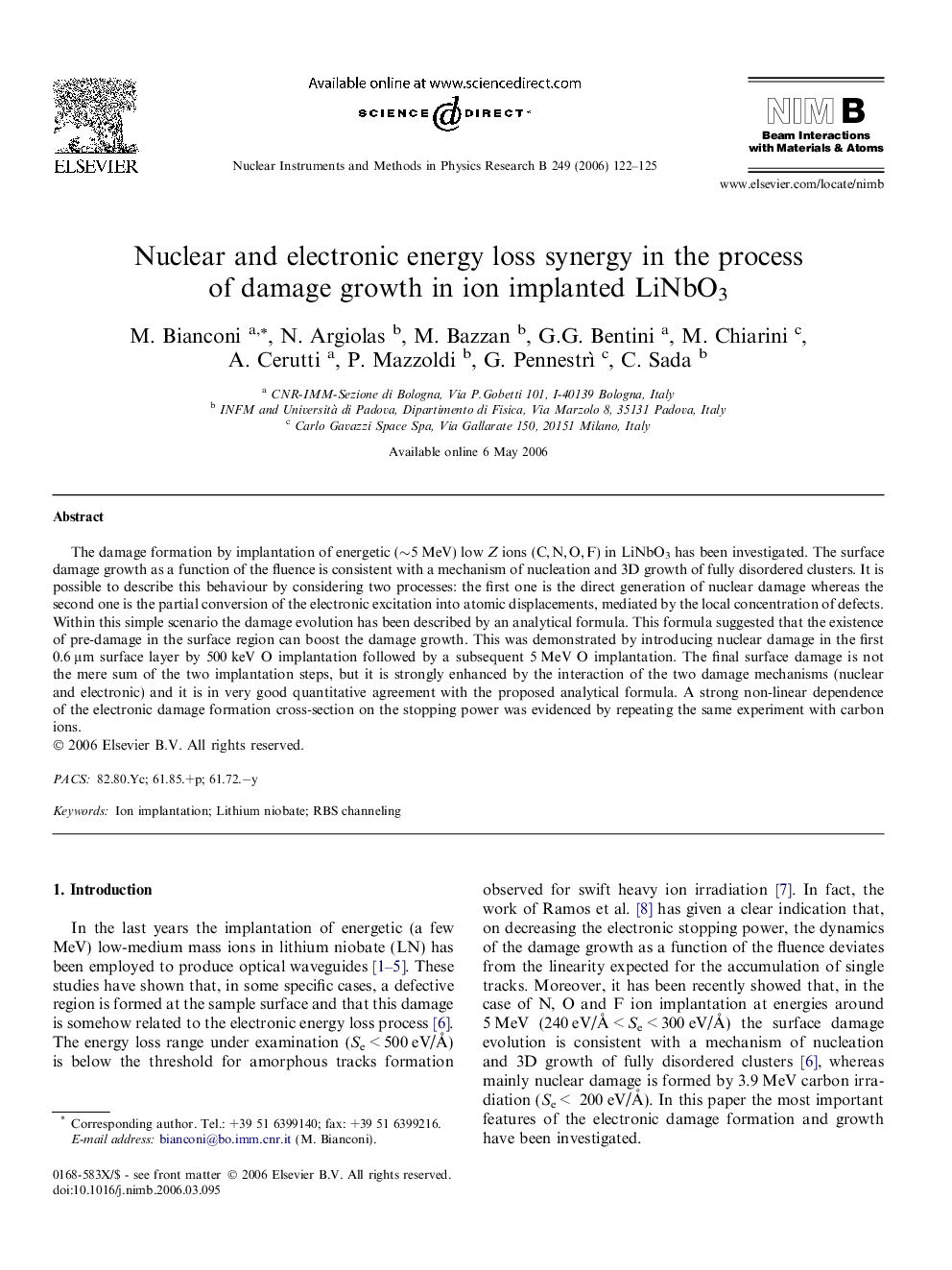| Article ID | Journal | Published Year | Pages | File Type |
|---|---|---|---|---|
| 1686463 | Nuclear Instruments and Methods in Physics Research Section B: Beam Interactions with Materials and Atoms | 2006 | 4 Pages |
The damage formation by implantation of energetic (∼5 MeV) low Z ions (C, N, O, F) in LiNbO3 has been investigated. The surface damage growth as a function of the fluence is consistent with a mechanism of nucleation and 3D growth of fully disordered clusters. It is possible to describe this behaviour by considering two processes: the first one is the direct generation of nuclear damage whereas the second one is the partial conversion of the electronic excitation into atomic displacements, mediated by the local concentration of defects. Within this simple scenario the damage evolution has been described by an analytical formula. This formula suggested that the existence of pre-damage in the surface region can boost the damage growth. This was demonstrated by introducing nuclear damage in the first 0.6 μm surface layer by 500 keV O implantation followed by a subsequent 5 MeV O implantation. The final surface damage is not the mere sum of the two implantation steps, but it is strongly enhanced by the interaction of the two damage mechanisms (nuclear and electronic) and it is in very good quantitative agreement with the proposed analytical formula. A strong non-linear dependence of the electronic damage formation cross-section on the stopping power was evidenced by repeating the same experiment with carbon ions.
